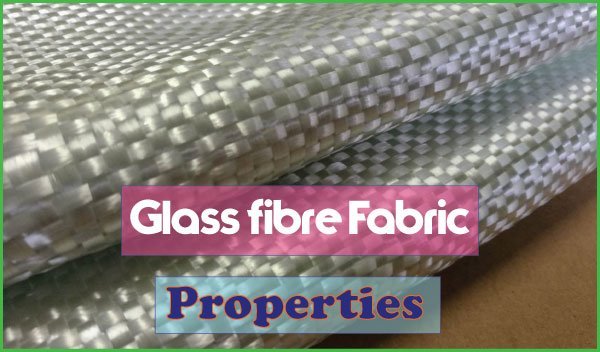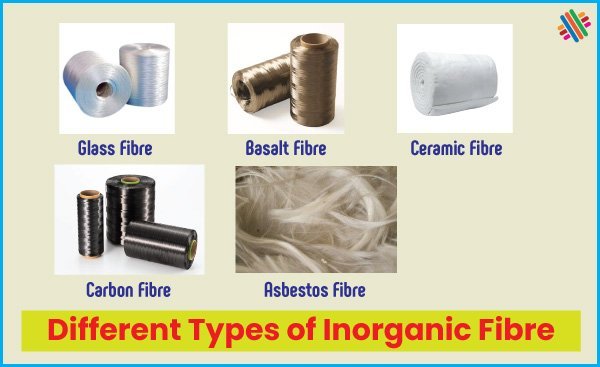An Overview of Glass Fiber Fabric
Last updated on January 6th, 2024 at 09:30 pm
The idea of Glass fibers and fabrics manufacturing has been around for hundreds of years. In 1931, experiments were conducted in the United States to manufacture glass fibers that were finer, more malleable, and less expensive. The manufacturing of filament and staple yarns has been ongoing for some years. By 1938, enough development had been done to suggest that glass fibers had a bright future in the textile industry.

What is Glass Fiber Fabric?
Glass fiber fabrics are an excellently industrial material with a wide range of applications. These are simple to make from essential elements that are essentially limitless in supply. Glass is a robust textile fabric that has never been broken. Glass fiber is frequently utilized in creating reinforcements for syntheses owing to its characteristics and inexpensive cost.
Glass fibers are a form of synthetic fiber that is unique. It can be directly applied to materials as a thin foil or with the help of a thin polyester film. It’s an extremely tough fiber. Glass is a unique industrial textiles fabric due to its flexibility as a fiber.
Glass Fiber Fabric Manufacturing process
Soda-lime-silicate or boro-silicate glass is used to manufacture fibers. To adjust the characteristics of the glass in the fabric, other elements might be added to silica. The following is a description of the glass fiber fabric manufacturing process.
Methods of production
Glass fibers fabric may be made in two different ways:
- Continuous Filament process
- Staple Fiber Process
Continuous Filament process
Continuous filamenting is a method of producing filaments of infinite length. Temperature–resistant and metal–alloy bushings with a large number of tiny holes allow the molten glass to flow downwards. A high-speed winder receives the strand of numerous filaments. To simplify future processing and prevent abrasion and breakage during yarn production, a lubricating binder is added.
Following winding, the filament is knotted and plied to produce yarns in the same way as other continuous-filament yarns are made, and the binder is eliminated by volatilizing in an oven. Multifilament yarns are utilized for a broad range of applications, including draperies and cables. Textured glass fiber yarns of various kinds have been developed.
Staple Fiber Process
Glass staple fibers are made in three different ways:
Centrifugal Process
Molten glass is fed through perforations in the bottom of a high-speed revolving metal spinner in this technique. The fibers are then linked together to form a web. Glass fibers of this type are utilized in heat and sound insulation. This method is ineffective for making textile-grade glass fibers.
Rod Drawing Process
It’s a contemporary take on an old technique for making strands out of glass rods. The ends of rods are heated, and glass filaments are drawn out onto a rapidly rotating cylinder, where they are wrapped parallel to one other. A web of sliver is produced when the sideways have moved by the cylinder.
Jet Process
Molten glass is blown out of tiny holes in spinnerets in this technique. A thin stream of molten glass is passed through a jet of compressed air. The fibers fall onto a spinning drum through a lubricating spray and a drying flame, where they create a thin web. This web of staple fiber is collected into a sliver, which is then spun into yarn. This is then woven into glass fiber staple textiles using traditional textile machines.
Glass Fiber Fabric Properties
| Fabric Name | Glass fabric |
| Fabric Composition | Soda-lime-silicate, boro-silicate glass |
| Fabric Durability | Excellent |
| Density gm/cc | 2.44 to 2.72 |
| Refractive Index | 1.521 to 1.579 |
| Sifting Point °C | 705 to 1056 |
| Annealing Point °C | 588 to 816 |
| Strain Point °C | 477 to 766 |
| Elongation % | 4.4 to 5.7 |
| Specific heat @ 200˚C | 0.9 to 1.03 |
Glass Fiber Fabric Characteristics
There are various types of glass fiber fabric available in the current market. Most glass fiber fabrics are made with filament yarn. The same properties of all glass fibers can be noticed as they are made from the same type of material. Below are the features of glass fiber fabric:
- Temperature and hygrometry have no effect on glass fiber. It has a high tensile strength and a low linear thermal expansion.
- Sunlight, fungus, and bacteria have no effect on glass fiber. This fiber features excellent durability.
- Glass fiber comes in a variety of diameters and may be mixed with a variety of organic and inorganic resins as well as mineral substrates like cement.
- Glass fiber has a low dielectric constant and a high dielectric strength. Even at modest thickness, it is an excellent electrical insulator.
- Glass fiber is naturally fire resistant since it is a mineral. It does not support or propagate a flame. When exposed to heat, it does not produce smoke or harmful compounds.
- Glass fibres are good thermal insulator due to their large surface to weight ratio. Its usefulness in the construction sector stems from this characteristic.
- Glass fibers have a mechanical property of 50% at 370°C, 25% at 480°C, a softness point of 845°C, and a melting temperature of 1,135°C.
Kelteks Product Made from Glass Fiber
Spray-up Roving
Spray up roving represents a compelling solution for fabricators that want to save time and resin while increasing the performance of their products.
Direct Roving
Direct roving is specifically designed for fast wet-out, good processing, high glass loading and excellent laminate properties, to maximize customers’ processing and minimize
Chopped Strand
Chopped Strand is known for excellent strand integrity, superior flow ability and processing property, delivering excellent mechanical property and high surface quality.
Edge protector
NEW solution for perfect corner reinforcement. Fluffy and cuddly fibers are easily squeezed into the sharp-edged joints and corners so laminate chipping is effectively prevented.
Application of Glass Fiber Fabric
Glass fabric is one of the most underappreciated technical textile fibers, having long been employed as a low-cost insulator and reinforcement for low-performance plastics and roofing materials. Glass fabric is becoming more widely recognized as a high-tech engineering component with exceptional characteristics. It is currently widely utilized in a wide range of high-performance composite applications, including:
- Insulations Industry
- Reinforcements Industry
- Filtration media Industry
- Medical Industry
- Water proofing Industry
- Automobile Industry
- Electrical Industry
Conclusion
Glass fibers are used to create fiberglass sewing fibers. Up to 1400 degrees Fahrenheit, it keeps its strength and remains stable and flexible. Sewing machines in all sectors have good drainage. It delivers long-lasting and high-quality seams. Electrical, thermal, and acoustic insulation are all common uses for glass fiber.
In many ways, they are lighter and more efficient than other insulators. Boats, automobiles, airplanes, radio and television cabinets, and other products are made with glass-fiber reinforced polymers. In various sectors, glass fiber and cloth are utilized to filter glass and liquids.
You may also like: Textile Protein Fiber




Please let me know if you’re looking for an author for your site. You have some great posts, and I think I would be a good asset. If you ever want to take some of the load off, I’d like to write some material for your blog in exchange for a link back to mine. Please shoot me an email if interested. Thanks.
An impressive share! I’ve just forwarded this onto a colleague who had been conducting a little homework on this.
And he actually ordered me breakfast due to the fact that I discovered it for him…
lol. So allow me to reword this…. Thank YOU for the meal!!
But yeah, thanx for spending some time to talk about this topic here on your site.
Good day I am so delighted I found your weblog,
I really found you by error, while I was looking on Aol for something else, Anyways I am here now and would just like to say kudos for
a marvelous post and a all round thrilling blog (I also love the theme/design), I don’t have time to browse it
all at the minute but I have saved it and also included your RSS feeds,
so when I have time I will be back to read much more,
Please do keep up the awesome work.
You’ve been great to me. Thank you!